Results 471 to 480 of 523
Thread: That 1700's Show
-
06-18-2021, 10:56 AM #471

I like using black shoe polish.
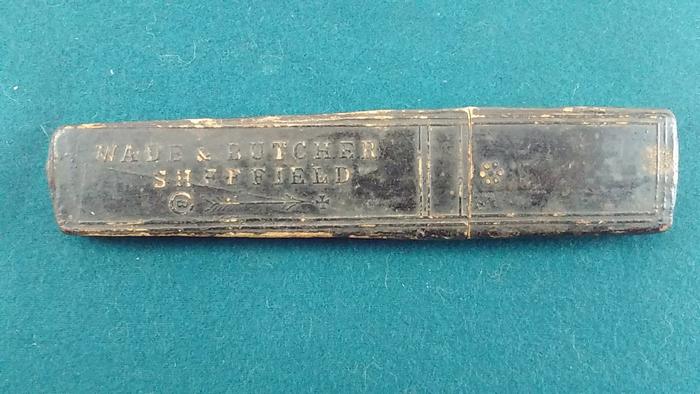
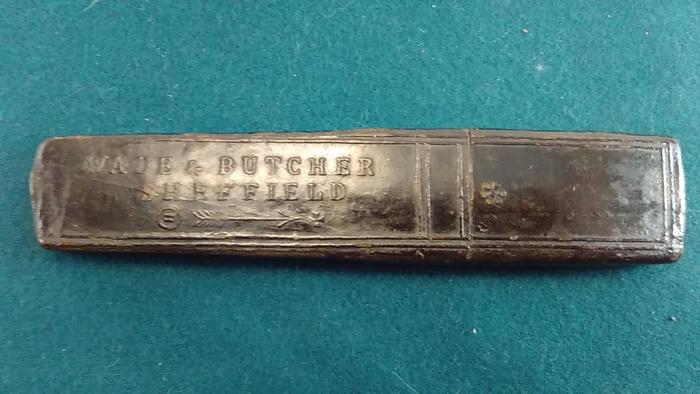 Mike
Mike
-
The Following 4 Users Say Thank You to outback For This Useful Post:
lohar (06-19-2021), markbignosekelly (08-22-2021), Steve56 (06-18-2021), STF (06-18-2021)
-
06-19-2021, 08:24 PM #472

yes, the color is restored and the shoe polish protects. thanks for the advice
-
06-21-2021, 10:32 PM #473Senior Member

- Join Date
- Mar 2018
- Location
- Toronto
- Posts
- 216
Thanked: 15
wow that is nice, i'll have to remember that.
-
06-22-2021, 10:42 AM #474Senior Member


- Join Date
- Feb 2018
- Location
- Manotick, Ontario, Canada
- Posts
- 2,797
Thanked: 557
-
The Following User Says Thank You to DZEC For This Useful Post:
outback (08-22-2021)
-
08-22-2021, 10:36 AM #475

So this is kind of a tricky one.
Dip at toe, very old scales, very widely used in the past few hundred years.....
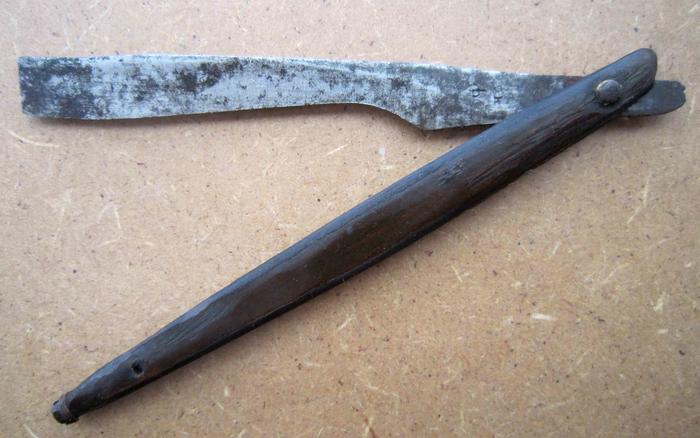
Symbol is a "flaming sword" with the initials H O.
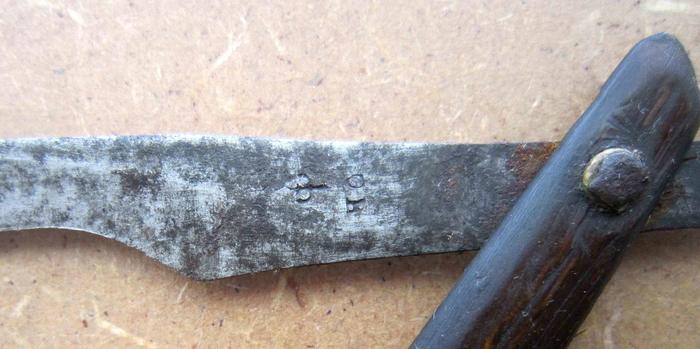
Looking at Sketchley's or Gales & Martin you can find a Samuel Kirkby with exactly that symbol, but with the initials R M.

So maybe someone has an idea?
Regards PeterLast edited by hatzicho; 08-22-2021 at 04:41 PM.
-
08-22-2021, 06:52 PM #476

the punches are not the same, but it is Sheffield.
This blade must have been very wide at the origin
-
08-23-2021, 07:59 AM #477

Hi lohar, thanks for your feedback. I think the blade had a usual width at the beginning, the perspective irritates a little.
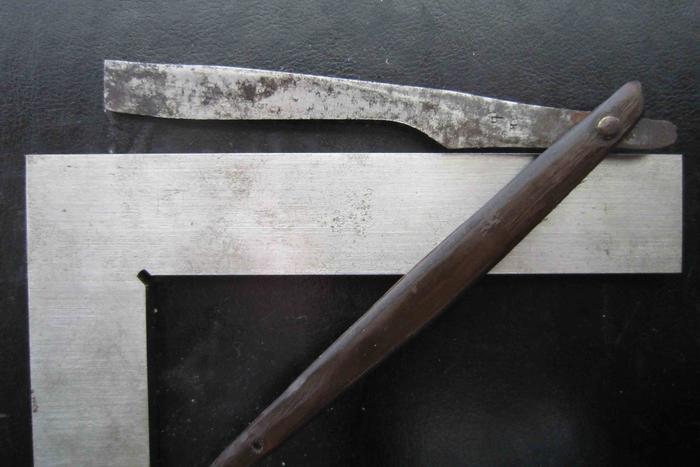
The scales are of course not origin - at least not in this shape and direction! They might have been the original ones, but turned 180° and reshaped. You can see the former pinhole at the lower end. And of course they must have been wider at the end to carry the tip of the blade. They are made of wood and you can clearly see marks of a knife where they have been narrowed.
If so the rescaling had already been quite some years ago, when the blade was already worn out. Reshaping of the scales was not done very carefully, so it might had practical issues not ästhetical. Maybe to reduce weight and space to put it into a travel kit.
Or simply an exchange of broken scales to have the possibility for further use of the razor... A poor man's razor.
Regards PeterLast edited by hatzicho; 08-23-2021 at 08:08 AM.
-
09-13-2021, 10:55 PM #478

C Milns stubtail in today. I can find a Benjamin Milnes 1787 but no reference to C. Milns, maybe a family member who dropped a letter to fit the name on the tangs as Wostenholm did? Anyway, the tail and design dates it to the late 1700s, so 1787 would be about right for this shape. If anyone has info on C. Milns, please post it.
It has extremely hard steel, even for a hard cast steel razor. It came equipped with the usual 250 year old problems, low places in the bevels, a few small chips, and a section on the show side near the nose that appeared to be sharpened at a much steeper angle. It took an hour and a half with a mellow 325 diamond plate to clear the issues, but the first image shows the new bevels after the coarse work. Mostly straight and even with only a little work left to do. A new ‘chocolate kiita’ (Alex Gilmore’s term) also arrived today and it is a fine, hard, smooth, and pure piece of Nakayama and it provided the final finish.My doorstop is a Nakayama
-
09-26-2021, 12:19 PM #479

An old France.....
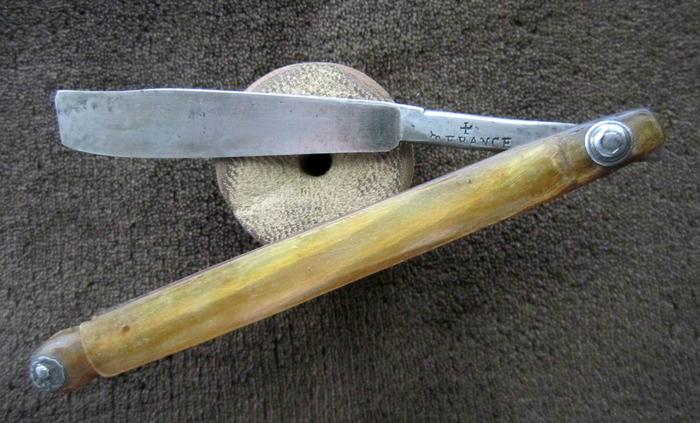
Tang has been reground to form a shoulder. But clearly a dip-at-toe 18th century razor -
although not a Brittain, Wilkinson and Brownell and no Thomas France !?
Joan helped out:
Thomas Morphy, son of James, to Thomas Gellie, cutler, Freedom 1751

Scales seem to be original, also reformed/grind on a later stage and backside broken out at the bottom pin.. Scales have been hold together with a string.
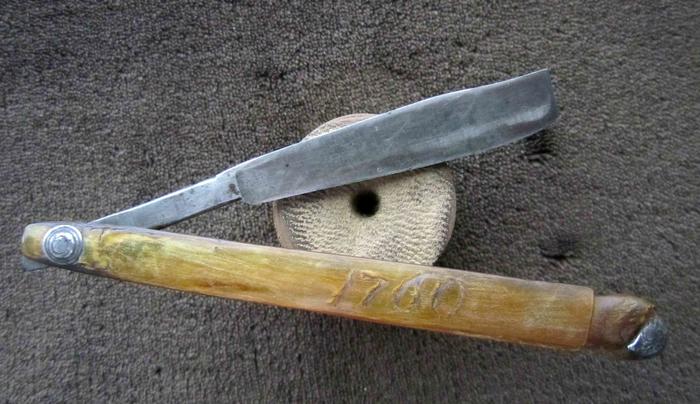
Engraved year of 1760 on the backside makes sence and would match the freedom date of Thomas Murphy.
Nice weekend to all and Stay sharp!
Peter
-
The Following User Says Thank You to hatzicho For This Useful Post:
ScienceGuy (10-14-2021)
-
09-26-2021, 12:28 PM #480

Just a thought...
Repair and save the scales. Then dye black to hide the ugly.Mike


 1356Likes
1356Likes LinkBack URL
LinkBack URL About LinkBacks
About LinkBacks







 Reply With Quote
Reply With Quote
